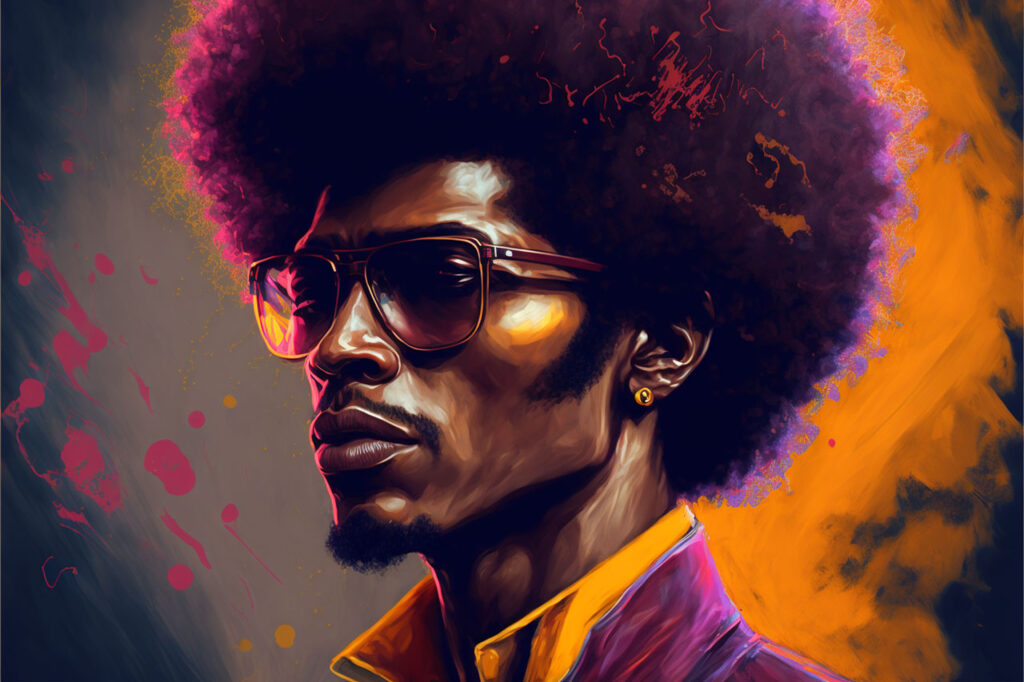Funk art is a style of art that emerged in the United States in the 1960s and 1970s. It is characterized by its bold, colorful, and humorous style, and is often associated with the counterculture movement of the time.
The Origins of Funk Art
The origins of funk art can be traced back to the Bay Area of California, where a group of artists, musicians, and intellectuals came together to form the Funk Art Movement. These artists were influenced by a range of cultural and artistic movements, including Abstract Expressionism, Pop Art, and the Beat Generation.
One of the key figures in the Funk Art Movement was Peter Saul, who is often credited with coining the term “funk art.” Saul was known for his irreverent and humorous paintings, which often featured political and social commentary. Other important figures in the movement include William T. Wiley, Roy De Forest, and Bruce Conner.

Funk art gained widespread popularity in the 1970s, thanks in part to the rise of the counterculture movement and the growing interest in alternative art forms. The style was embraced by a number of galleries and museums, and funk art exhibitions became a regular feature of the art world.
Funk Art in the 80’s and Beyond
In the 1980s and 1990s, funk art fell out of favor, as the counterculture movement waned and the art world turned its attention to other styles and movements. However, in recent years, there has been a resurgence of interest in this style, with a number of exhibitions and publications devoted to the movement.

Today, funk art remains an important and influential part of the art world, and is admired for its bold, colorful, and humorous style. It continues to inspire artists and collectors alike, and is a testament to the enduring power of counterculture and the role it has played in shaping the art world.
Who are Some Popular Funk Art Artists?
Some popular artists of this genre include:
- John Outterbridge
- David Hammons
- Noah Purifoy
- Betye Saar
- William T. Williams
- Senga Nengudi
- Al Loving
- Howardena Pindell
- Linda Goode Bryant
- Michael Ray Charles
About John Outterbridge
John Outterbridge is an African American artist and cultural activist who was born in 1933 in Greensboro, North Carolina. He is known for his work in the Funk art movement, which emerged in the 1960s and 1970s as a response to the Civil Rights Movement. Outterbridge’s work is characterized by its use of found and reclaimed materials, and its focus on social and political issues.
Outterbridge began his career as a painter, but soon began incorporating found objects and materials into his work. He often used materials such as discarded metal, wood, and fabric to create sculptures and assemblages that addressed issues of poverty, racism, and social injustice. His work was included in the seminal 1971 exhibition “The Black American Aesthetic” at the Studio Museum in Harlem, which helped to define the Funk art movement.
Throughout his career, Outterbridge has also been an active cultural organizer, working to promote the work of other artists and to create opportunities for underrepresented communities. In the 1970s, he founded the Los Angeles Cultural Affairs Department’s Inner City Cultural Center, which provided studio space and resources for artists of color. He also served as the Director of the Watts Towers Arts Center, where he helped to establish a residency program for artists.
Outterbridge’s work has been widely exhibited, including solo shows at the California African American Museum in Los Angeles, the Studio Museum in Harlem, and the Museum of Contemporary Art, Los Angeles. His work is included in the collections of major institutions such as the Smithsonian American Art Museum, the Museum of Modern Art, and the Metropolitan Museum of Art. Outterbridge continues to work and exhibit, and he is considered a major figure in the Funk art movement and in the field of contemporary art.
About David Hammons
David Hammons is an African American artist and sculptor known for his conceptual and performance-based work. He was born in 1943 in Springfield, Illinois, and he is considered one of the most important and influential artists of his generation. His work addresses issues of race, class, and social inequality, often using found objects and materials to create sculptures and installations that comment on these issues.
Hammons began his career in the 1960s and 1970s, during the Civil Rights Movement. His early work was heavily influenced by the Black Power movement, and it often dealt with issues of black identity and cultural resistance. He began experimenting with performance art, and his work often incorporated elements of ritual and ceremony. He is particularly known for his large-scale installations that use everyday materials such as hair, broken glass, and discarded clothing to comment on the lived experience of black Americans.
In the 1980s, Hammons’ work began to receive widespread recognition, and he had solo exhibitions at major institutions such as the Whitney Museum of American Art, the Museum of Contemporary Art, Chicago and the Hirshhorn Museum and Sculpture Garden in Washington, D.C. His work is included in the collections of major museums around the world, including the Metropolitan Museum of Art, the Museum of Modern Art, and the Tate Modern.
Hammons’ work is notable for its use of found materials and its focus on social and political issues. He often uses everyday materials such as hair, broken glass, and discarded clothing to comment on the lived experience of black Americans. His work is considered to be a major influence on the development of post-minimalist and conceptual art. Hammons continues to work and exhibit, and he is considered one of the most important and influential artists of his generation.
